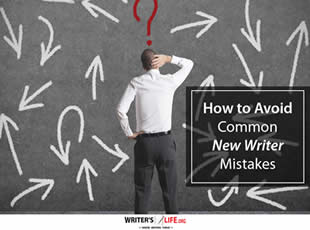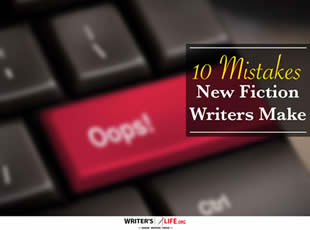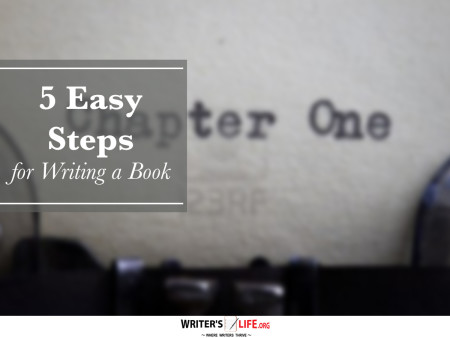- How To Tackle Jealousy In Creative Writing
- Common Submission Mistakes
- How To Stop Your Blog Becoming Boring
- The One Thing Every Successful Writer Has In Common
- How To Make Yourself Aware Of Publishing Scams
- Why Almost ALL Writers Make These Grammar Mistakes At Some Point
- 5 Tips For Authors On How To Deal With Rejection
- Top Mistakes to Avoid When Writing a Novel
- How to Avoid Common New Writer Mistakes
- 10 Mistakes New Fiction Writers Make
10 Conversion Copy Mistakes Authors Should Avoid

Conversion Copy Mistakes are easy to slip into, yet avoiding them can give your book the edge it needs. Let's dive into the common errors and how you can sidestep them.
Avoiding Conversion Copy Errors in Your Writing
As an author, you're probably more familiar with storytelling than selling. But even the best narratives can fall flat if they don't engage readers effectively in your marketing materials. One crucial error is neglecting to connect emotionally with your audience. How do you expect a reader to invest in your journey if it feels like you're reading off a grocery list?
Another common conversion copy pitfall is failing to provide value upfront. Readers, much like diners at a restaurant, want to savor the appetizer before committing to the main course. Make sure your copy is not only enticing but rewarding from the get-go.
Overcome Common Conversion Copywriting Mistakes
When you think about conversion copywriting mistakes, consider the rhythm and flow of your sentences. Clunky or overly complex phrasing can lose your audience faster than a catapult. Simplicity doesn't mean simplistic; it means clear communication without all the frills.
Equally important is consistency in tone and style. Switching from formal to casual can confuse readers, much like watching an actor forget their lines. Once you establish your voice, stay true to it for coherence and authenticity.
Recognizing Tricky Conversion Writing Errors
Even seasoned writers can stumble into tricky conversion writing errors. A common misstep is relying too heavily on jargon. While expert language might seem impressive, it can alienate those who haven't got an industry-specific decoder ring. Keep your language accessible and inviting.
Conversion copy challenges are not just about what's written but also what's not. Omitting a strong call to action (CTA) can be a costly conversion copy mistake. Readers need direction—tell them what to do next in a clear and compelling way.
How to Prevent Conversion Copy Setbacks
Prevent conversion copy setbacks by testing your material. How do you know what works if you never try new approaches? A/B testing can be your best friend, helping you understand what resonates most with your audience.
Never underestimate the power of peer review, either. Sometimes we’re too close to our own work. Fresh eyes can catch errors you’ve overlooked, offering insights and suggestions you might never have considered.
Critical Errors in Conversion Copy You Should Avoid
One critical error in conversion copy is failing to maintain focus. Like a compass without a needle, your copy will fail to guide readers without a clear objective. Each sentence should pull toward a singular goal.
Poor editing can also sabotage your efforts. Don’t let small grammatical errors or typos diminish your credibility. Meticulous proofreading shows respect for your readers and your craft.
Avoid Conversion Writing Blunders to Stay on Track
Avoid conversion writing blunders by keeping your audience at the heart of your writing. Understanding who they are, what they want, and how they read is essential. Craft your copy with their preferences in mind.
Finally, remember that one size doesn’t fit all. Tailor your copy for different platforms, whether it’s a book blurb, a social media post, or an email. Adaptation can prevent costly conversion copy mistakes.
- Connect emotionally with the audience
- Offer value upfront
- Maintain clear, simple communication
- Keep consistency in tone and style
- Avoid jargon and industry-specific language
- Always include a strong call to action
Before publishing, keep these points on your checklist.
Frequently Asked Questions About Conversion Copy Mistakes
Q: What are conversion copy mistakes?
A: Conversion copy mistakes are errors in writing that hinder the effectiveness of your material in persuading readers to take a desired action.
Q: How can I avoid common conversion copy pitfalls?
A: Understand your audience, keep your language clear and consistent, and always include a strong call to action to guide your readers.
Q: Why is testing important for conversion copy?
A: Testing allows you to see what works best with your audience, providing insights to refine your copy for better engagement and conversion rates.
Want to promote your book after it’s published? Check out our Book Marketing Articles. According to Wikipedia, knowing your audience's preferences is crucial for effective marketing. If you're serious about growing your author career, don't miss out on these free tools and templates built specifically for writers. Access all 7 free resources here.


























